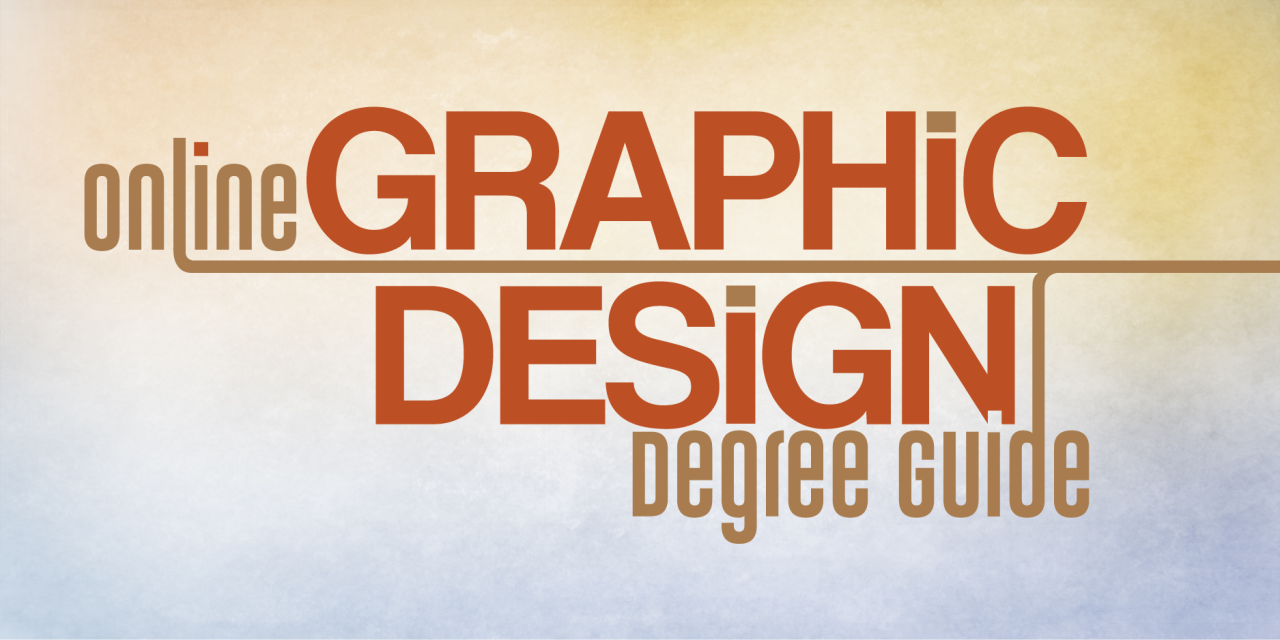In the realm of digital artistry, where creativity knows no bounds, the online graphic design degree emerges as a beacon of opportunity. With the ever-increasing demand for visually captivating content, the graphic design industry beckons aspiring artists to embark on a transformative journey that empowers them to shape the visual landscape of the modern world.
As technology continues to reshape our interactions, the demand for skilled graphic designers who can effectively communicate ideas and evoke emotions through visual storytelling has skyrocketed. Online graphic design programs offer a flexible and accessible pathway to acquiring the knowledge and skills necessary to thrive in this dynamic field.
Overview of Online Graphic Design Degrees
In today’s digital age, graphic designers are in high demand. An online graphic design degree provides the skills and knowledge necessary to succeed in this competitive field.
Online graphic design programs offer flexibility and convenience, allowing students to study at their own pace and on their own time. This makes them a great option for working professionals, stay-at-home parents, and anyone else who wants to pursue a career in graphic design without having to quit their job or relocate.
Types of Online Graphic Design Programs
There are many different types of online graphic design programs available, from associate’s degrees to master’s degrees. Some programs focus on general graphic design skills, while others specialize in specific areas, such as web design, print design, or motion graphics.
When choosing an online graphic design program, it’s important to consider your career goals and the type of work you want to do. You should also make sure that the program is accredited by a reputable organization.
Curriculum and Coursework
Online graphic design degree programs typically follow a structured curriculum that provides students with a comprehensive understanding of the field. The curriculum covers various aspects of graphic design, including design principles, software proficiency, and industry-specific knowledge.
Core courses in an online graphic design degree program often include:
Design Principles and Theory
- Explores fundamental design principles such as color theory, typography, and composition.
- Develops students’ understanding of visual communication and aesthetics.
Graphic Design Software
- Introduces students to industry-standard graphic design software such as Adobe Photoshop, Illustrator, and InDesign.
- Provides hands-on experience in using these tools to create and manipulate images, graphics, and layouts.
Typography
- Covers the principles of typography, including font selection, hierarchy, and readability.
- Develops students’ ability to effectively use typography in their designs.
Web Design
- Introduces the fundamentals of web design, including website layout, navigation, and user experience.
- Provides students with the skills to create effective and visually appealing websites.
Assignments and Projects
Throughout the program, students are expected to complete a variety of assignments and projects that demonstrate their understanding of the concepts and skills taught in the courses. These may include:
- Creating logos, brochures, and other marketing materials.
- Designing websites and landing pages.
- Developing brand identities and style guides.
Career Prospects and Industry Trends
An online graphic design degree unlocks a wide range of career opportunities in various industries. Graphic designers are highly sought after due to the increasing demand for visual content in today’s digital landscape.
Industries with a high demand for graphic designers include advertising, marketing, publishing, web design, and entertainment. These professionals are responsible for creating visually appealing and effective designs that convey messages, promote products, and enhance user experiences.
Emerging Trends and Technologies
The graphic design field is constantly evolving, driven by technological advancements and changing consumer preferences. Some emerging trends include:
- Motion Graphics:The use of animation and motion to create engaging and dynamic designs.
- Augmented and Virtual Reality (AR/VR):Designing immersive experiences that blur the lines between the physical and digital worlds.
- Artificial Intelligence (AI):Leveraging AI tools to automate tasks, enhance creativity, and personalize designs.
- Sustainability:Incorporating eco-friendly practices and materials into design processes.
By embracing these trends and technologies, graphic designers can stay ahead of the curve and create cutting-edge designs that meet the evolving needs of clients and audiences.
Faculty and Resources

Online graphic design programs engage experienced faculty members who bring their expertise and industry knowledge to the virtual classroom. These educators possess a wealth of practical experience and theoretical understanding, ensuring students receive a comprehensive and industry-relevant education.
In addition to faculty guidance, online graphic design programs provide students with access to a range of learning resources and support services. These resources include online libraries, discussion forums, and technical support to assist students with their studies and ensure their success.
Industry Expertise
- Faculty members have worked on real-world projects for leading companies and organizations, bringing practical insights and industry best practices to the classroom.
- Guest lectures and workshops by industry professionals provide students with exposure to the latest trends and technologies in the field.
Online Learning Resources
- Online libraries offer access to a vast collection of books, journals, and other resources related to graphic design, typography, and visual communication.
- Discussion forums allow students to connect with peers, share ideas, and receive feedback on their work.
- Technical support is available to assist students with any technical issues or software-related challenges they may encounter during their studies.
Program Comparison and Considerations
Choosing the right online graphic design degree program requires careful consideration. Different programs vary in terms of tuition costs, program duration, accreditation, and student support. To make an informed decision, it’s crucial to compare these factors and select the program that best aligns with your individual needs and preferences.
Below is a table comparing key factors of different online graphic design degree programs:
Tuition Costs
- Tuition costs can vary significantly between programs. Consider the total cost of the program, including tuition, fees, and any additional expenses.
Program Duration
- Program duration typically ranges from 2 to 4 years. Choose a program that fits your schedule and learning pace.
Accreditation
- Accreditation ensures that a program meets certain quality standards. Look for programs accredited by reputable organizations, such as the National Association of Schools of Art and Design (NASAD).
Student Support
- Student support services can include academic advising, career counseling, and technical assistance. Choose a program that provides comprehensive support to help you succeed.
Consider Your Individual Needs
- When selecting a program, consider your career goals, learning style, and financial situation. Choose a program that offers the coursework, faculty expertise, and resources that align with your aspirations.
End of Discussion

An online graphic design degree unlocks a world of possibilities, empowering individuals to pursue their creative passions while equipping them with the tools to succeed in a rapidly evolving industry. Whether you aspire to design captivating logos, craft visually stunning websites, or create engaging social media campaigns, an online graphic design degree provides the foundation for a fulfilling and rewarding career in the realm of visual communication.


